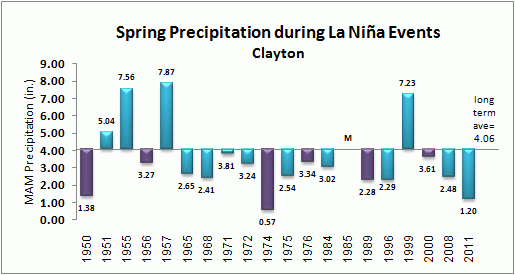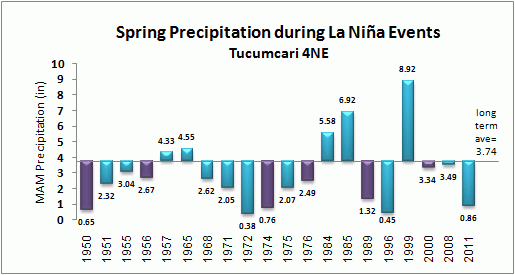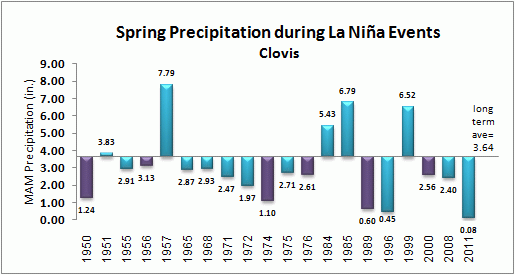
| Northeastern Plains |
| March-April-May Precipitation |
|
(Return to Main Feature) or go to CD1 | CD2 | CD4 | CD5 | CD6 | CD7 | CD8 |
|
Results for the climate division averages for all La Niña events indicates that the northeast plains have the smallest average precipitation deficit for the spring season, with 79% to 85% of the long term precipitation. The three sites examined support this value with departures only slightly below normal. During strong La Niña events, all stations have a significant reduction in precipitation. It is also important to note that for these stations, the average precipitation in March-April-May is more than double that of winter, so that similar departures in terms of percent actually result in a greater departure in terms of inches of precipitation. |
|
A description of the graphs is located at the bottom of the page. |
 |
| Percent of Longterm Average for all La Niña Events = 85% , for strong La Niña Events = 59% |
 |
| Percent of Longterm Average for all La Niña Events = 79% , for strong La Niña Events = 50% |
 |
| Percent of Longterm Average for all La Niña Events = 83% , for strong La Niña Events = 51% |
|
Precipitation values for 3-month periods during 19 La Niña Events since 1949-50 are plotted with respect to the long term precipitation average, listed to the right of the graph. The precipitation totals for each 3-month period are plotted above or below each bar. Years for which the La Niña Event was considered to be strong are colored in purple. "M" represents a 3-month period with missing data. Finally, the percents of longterm normal for all La Niña events and for the strong La Niña events are listed below each graph. |